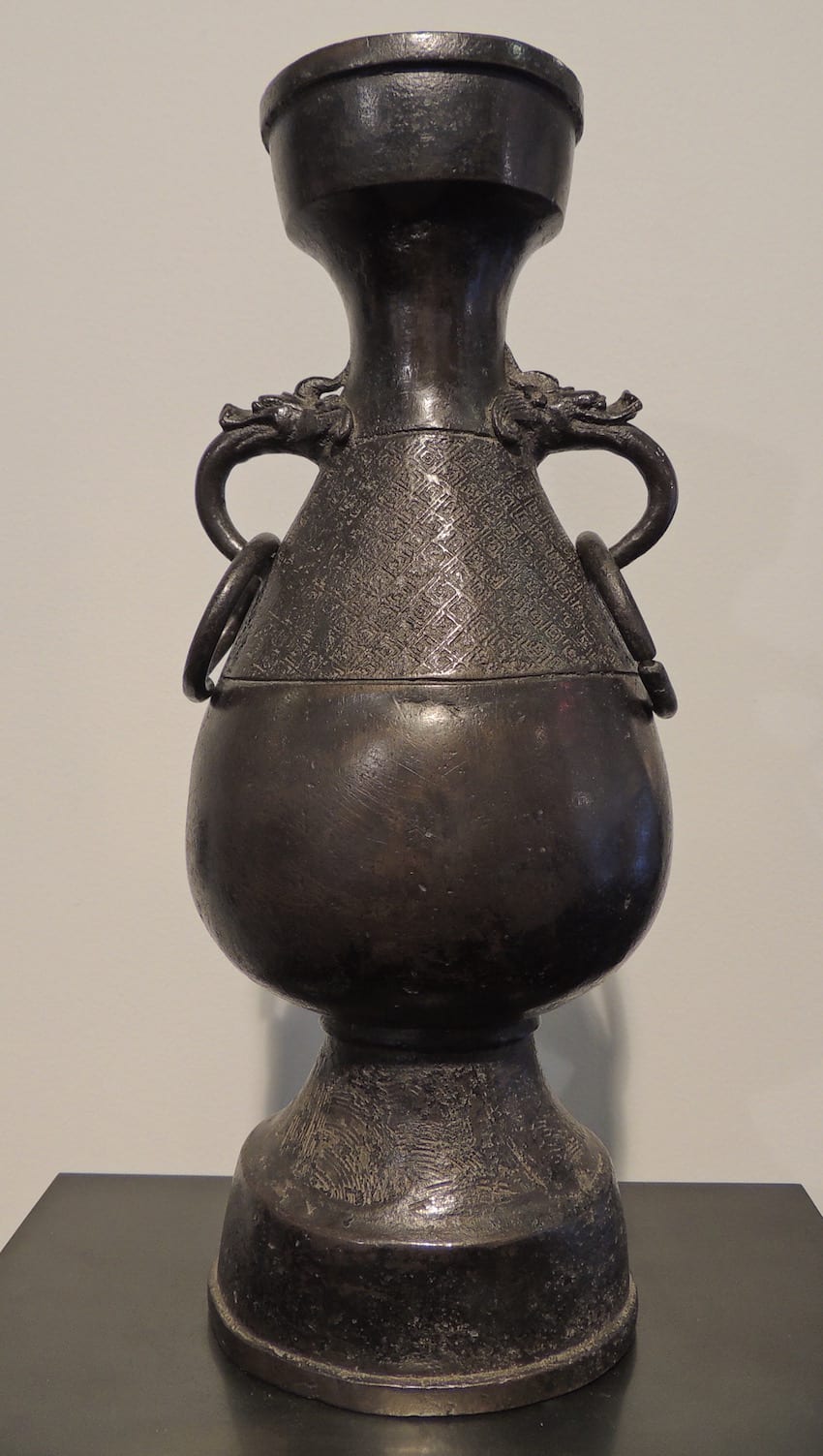Chinese bronze urn type vase with guardian dragons ring handles, 1800 CE - 1900 CE
Bronze
12
CB.2755
Further images
Since the Bronze Age, around 1600 BC, China has become one of the most skilled bronze-working civilizations in the ancient world, conquering to perfection the techniques for heating, melting and...
Since the Bronze Age, around 1600 BC, China has become one of the most skilled bronze-working civilizations in the ancient world, conquering to perfection the techniques for heating, melting and casting metal in order to create a large number of household everyday utensils, tools, weaponry and sacred items.
A good number of these elaborately decorated vessels and tools were deposited as grave goods in the tombs of royalty and the nobility.
They were often produced for high ranking individual to be used in ritual offerings of food and drink to their ancestors in family temples or in ceremonial halls over the tombs themselves, during ritual banquets which took place on these tombs and to which both the living and dead members of a family clan participated.
On the death of the owner such prestigious metal objects would be placed in the tomb, so that the deceased could continue to pay his respects and use them in the afterlife.
A good number of metal objects were not used as everyday objects but were cast specifically as grave goods.
A good number of these elaborately decorated vessels and tools were deposited as grave goods in the tombs of royalty and the nobility.
They were often produced for high ranking individual to be used in ritual offerings of food and drink to their ancestors in family temples or in ceremonial halls over the tombs themselves, during ritual banquets which took place on these tombs and to which both the living and dead members of a family clan participated.
On the death of the owner such prestigious metal objects would be placed in the tomb, so that the deceased could continue to pay his respects and use them in the afterlife.
A good number of metal objects were not used as everyday objects but were cast specifically as grave goods.





